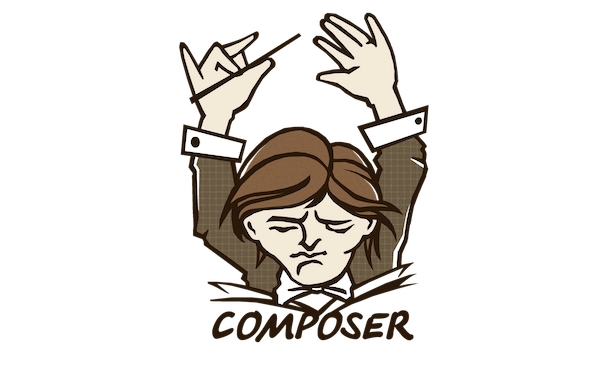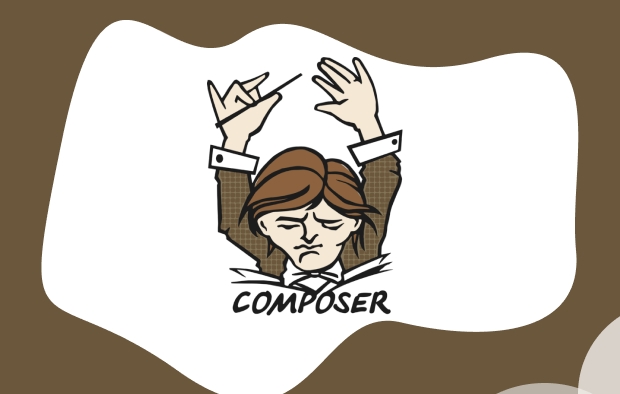How to start a new project with Composer?
Jul 30, 2025 am 03:46 AMTo start a new project, first run composer init to initialize the project and configure the composer.json file, then enter the project name, description, author, stability, license and other information according to the prompts. Then use composer require to add the required dependencies such as monolog/monolog, or use composer create-project to create framework-based applications such as Laravel. Then make sure that the project contains composer.json, composer.lock and vendor/director, and introduce vendor/autoload.php in index.php to enable automatic loading. Set PSR-4 automatic loading such as "MyApp\": "src/", then run composer dump-autoload to update the autoloader, and finally execute composer install the dependency, submit composer.json and composer.lock to version control, and at the same time, add vendor/add.gitignore to avoid submitting dependency files, and complete project initialization.

Starting a new project with Composer is straightforward and sets up a solid foundation for managing dependencies in PHP projects. Here's how to do it step by step.

? Initialize a New Project
Open your terminal and navigate to your project directory. Run:
composer init
This command starts an interactive wizard that helps you set up your composer.json file.

You'll be asked to provide:
- Project name (eg,
your-username/project-name) - Description
- Author (usually in format
Name <email>) - Minimum stability (default is
stable) - License (eg,
MIT) - Whether to require any dependencies now
Answer each prompt. You can press Enter to accept defaults.

? Add Dependencies
Even if you skip adding packages during init , you can add them later. For example:
composer requires monolog/monolog
This installs the Monolog library and updates both composer.json and composer.lock .
If you're building a framework-based app (like Laravel or Symfony), you might instead use a project installer:
composer create-project laravel/laravel my-new-app
This creates a new directory my-new-app with the Laravel framework already installed.
?? Project Structure Basics
After initializing, your project should have:
-
composer.json– your project config and dependencies -
composer.lock– exact versions of installed packages (generated after install) -
vendor/directory – where dependencies are installed (aftercomposer install)
If you're starting from scratch, create your main PHP file (eg, index.php ) and autoload classes using Composer:
require_once 'vendor/autoload.php';
Composer automatically sets up PSR-4 or PSR-0 autoloading if you define it in composer.json . Example:
"autoload": {
"psr-4": {
"MyApp\\": "src/"
}
}Then run:
composer dump-autoload
To regenerate the autoloader (especially useful during development).
? Final Steps
- Run
composer installto install dependencies (useful when cloning the project later). - Commit
composer.jsonandcomposer.lockto version control (eg, Git). - Add
vendor/to.gitignoreto avoid committing dependencies.
That's it. You've got a Composer-powered PHP project up and running. From here, add packages as needed and organize your code with proper autoloading.
Basically just init , require , and autoload — and you're good to go.
The above is the detailed content of How to start a new project with Composer?. For more information, please follow other related articles on the PHP Chinese website!

Hot AI Tools

Undress AI Tool
Undress images for free

Undresser.AI Undress
AI-powered app for creating realistic nude photos

AI Clothes Remover
Online AI tool for removing clothes from photos.

Clothoff.io
AI clothes remover

Video Face Swap
Swap faces in any video effortlessly with our completely free AI face swap tool!

Hot Article

Hot Tools

Notepad++7.3.1
Easy-to-use and free code editor

SublimeText3 Chinese version
Chinese version, very easy to use

Zend Studio 13.0.1
Powerful PHP integrated development environment

Dreamweaver CS6
Visual web development tools

SublimeText3 Mac version
God-level code editing software (SublimeText3)
 Recommended Laravel's best expansion packs: 2024 essential tools
Apr 30, 2025 pm 02:18 PM
Recommended Laravel's best expansion packs: 2024 essential tools
Apr 30, 2025 pm 02:18 PM
The essential Laravel extension packages for 2024 include: 1. LaravelDebugbar, used to monitor and debug code; 2. LaravelTelescope, providing detailed application monitoring; 3. LaravelHorizon, managing Redis queue tasks. These expansion packs can improve development efficiency and application performance.
 What is the difference between php framework laravel and yii
Apr 30, 2025 pm 02:24 PM
What is the difference between php framework laravel and yii
Apr 30, 2025 pm 02:24 PM
The main differences between Laravel and Yii are design concepts, functional characteristics and usage scenarios. 1.Laravel focuses on the simplicity and pleasure of development, and provides rich functions such as EloquentORM and Artisan tools, suitable for rapid development and beginners. 2.Yii emphasizes performance and efficiency, is suitable for high-load applications, and provides efficient ActiveRecord and cache systems, but has a steep learning curve.
 Laravel environment construction and basic configuration (Windows/Mac/Linux)
Apr 30, 2025 pm 02:27 PM
Laravel environment construction and basic configuration (Windows/Mac/Linux)
Apr 30, 2025 pm 02:27 PM
The steps to build a Laravel environment on different operating systems are as follows: 1.Windows: Use XAMPP to install PHP and Composer, configure environment variables, and install Laravel. 2.Mac: Use Homebrew to install PHP and Composer and install Laravel. 3.Linux: Use Ubuntu to update the system, install PHP and Composer, and install Laravel. The specific commands and paths of each system are different, but the core steps are consistent to ensure the smooth construction of the Laravel development environment.
 Laravel logs and error monitoring: Sentry and Bugsnag integration
Apr 30, 2025 pm 02:39 PM
Laravel logs and error monitoring: Sentry and Bugsnag integration
Apr 30, 2025 pm 02:39 PM
Integrating Sentry and Bugsnag in Laravel can improve application stability and performance. 1. Add SentrySDK in composer.json. 2. Add Sentry service provider in config/app.php. 3. Configure SentryDSN in the .env file. 4. Add Sentry error report in App\Exceptions\Handler.php. 5. Use Sentry to catch and report exceptions and add additional context information. 6. Add Bugsnag error report in App\Exceptions\Handler.php. 7. Use Bugsnag monitoring
 What is the yii framework? Tutorial on how to use yii framework
Apr 18, 2025 pm 10:57 PM
What is the yii framework? Tutorial on how to use yii framework
Apr 18, 2025 pm 10:57 PM
Article Summary: Yii Framework is an efficient and flexible PHP framework for creating dynamic and scalable web applications. It is known for its high performance, lightweight and easy to use features. This article will provide a comprehensive tutorial on the Yii framework, covering everything from installation to configuration to development of applications. This guide is designed to help beginners and experienced developers take advantage of the power of Yii to build reliable and maintainable web solutions.
 Composer: The Package Manager for PHP Developers
May 02, 2025 am 12:23 AM
Composer: The Package Manager for PHP Developers
May 02, 2025 am 12:23 AM
Composer is a dependency management tool for PHP, and manages project dependencies through composer.json file. 1) parse composer.json to obtain dependency information; 2) parse dependencies to form a dependency tree; 3) download and install dependencies from Packagist to the vendor directory; 4) generate composer.lock file to lock the dependency version to ensure team consistency and project maintainability.
 Laravel integration with social media login (OAuth)
May 22, 2025 pm 09:27 PM
Laravel integration with social media login (OAuth)
May 22, 2025 pm 09:27 PM
Integrating social media login in the Laravel framework can be achieved by using the LaravelSocialite package. 1. Install the Socialite package: use composerrequirelaravel/socialite. 2. Configure the service provider and alias: add relevant configuration in config/app.php. 3. Set API credentials: Configure social media API credentials in .env and config/services.php. 4. Write controller method: Add redirection and callback methods to handle social media login process. 5. Handle FAQs: Ensure user uniqueness, data synchronization, security and error handling. 6. Optimization practice:
 Composer: A Comprehensive Guide to PHP Package Management
May 11, 2025 am 12:17 AM
Composer: A Comprehensive Guide to PHP Package Management
May 11, 2025 am 12:17 AM
Composer is a PHP dependency management tool that manages project dependencies through composer.json file. 1. Use composerinit to initialize the project. 2. Add dependencies such as composerrequireguzzlehttp/guzzle. 3. Advanced usage includes configuring private repositories and using script hooks. 4. Common errors such as dependency conflicts can be debugged through the composerwhy-not command. 5. Performance optimization is recommended to use composerinstall-prefer-dist and periodically update dependencies.






